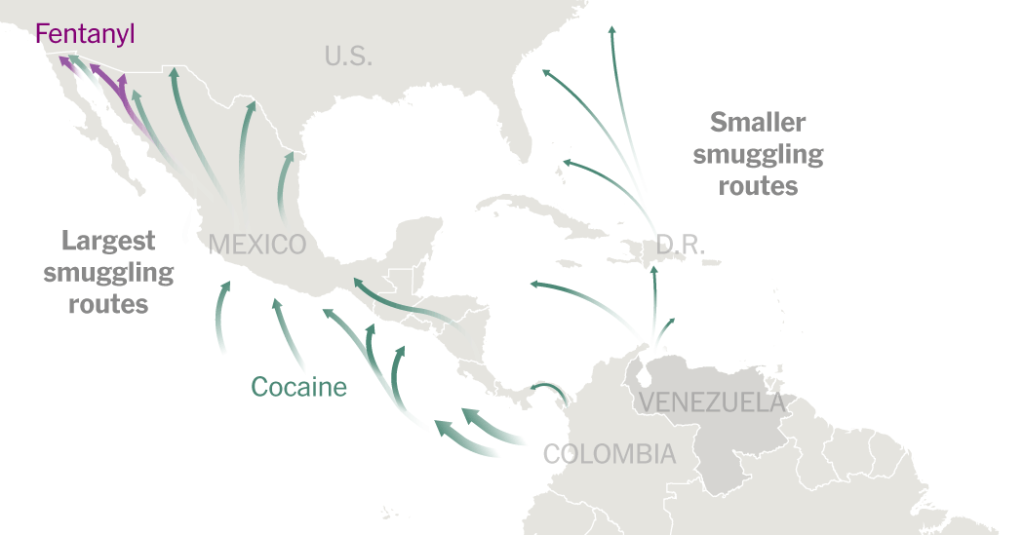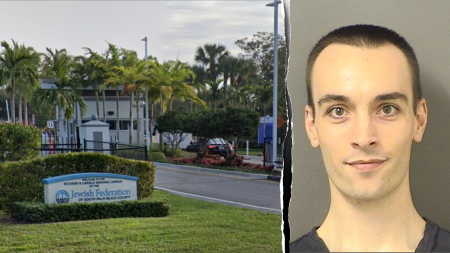U.S. Military Strikes in Venezuela’s Waters: A Disconnect Between Policy and Drug Trafficking Reality
Military Action Escalates Against Alleged Drug Smugglers as Questions Emerge About Strategic Rationale
The United States military has conducted a series of strikes on vessels off Venezuela’s coast, resulting in at least 21 fatalities among those aboard small boats allegedly engaged in drug smuggling operations. These actions, endorsed by President Trump under the assertion that America is in an “armed conflict” with drug cartels, represent a significant escalation in military tactics against narcotics trafficking in the region. The president’s vow to “destroy Venezuelan terrorists and trafficking networks” signals an intensified approach to combating drug flow into the United States, though experts question whether these operations align with the actual geography of drug production and transportation routes.
The military strikes highlight a puzzling strategic focus, as Venezuela plays a relatively minor role in the drug trafficking ecosystem compared to other Latin American nations. Intelligence assessments from U.S. agencies, Colombian authorities, and United Nations monitoring indicate that the vast majority of cocaine production and smuggling occurs elsewhere in the region. More strikingly, according to drug enforcement experts, Venezuela has virtually no involvement in the fentanyl trade—the substance most frequently cited by administration officials as America’s most pressing drug-related national security threat. This apparent disconnect between operational targeting and trafficking realities raises questions about the underlying objectives of these maritime interdiction efforts.
The Evolving Landscape of Drug Trafficking Routes
Drug trafficking patterns have undergone significant transformation since the height of Caribbean smuggling in the 1980s and 1990s. During that era, the island chains and waters between South America and Florida served as primary conduits for cocaine shipments. However, contemporary intelligence indicates that Pacific routes now dominate cocaine transportation networks. While the Caribbean remains relevant in trafficking operations, its prominence has diminished substantially as smugglers adapted to increased surveillance and interdiction efforts. Regional security officials report that in response to heightened U.S. naval presence, some trafficking organizations have pivoted to aerial transportation methods, flying narcotics shipments over Caribbean territories rather than moving them by sea.
The shifting focus of U.S. drug enforcement priorities further complicates the picture. In recent years, senior American officials have rarely emphasized cocaine interdiction as their primary objective. Instead, public statements, congressional testimony, and resource allocation have overwhelmingly concentrated on combating fentanyl trafficking—the synthetic opioid most closely associated with America’s devastating overdose epidemic. This prioritization makes the maritime operations against alleged cocaine smugglers in Venezuelan waters appear somewhat disconnected from stated national drug control priorities, especially given the absence of evidence linking these vessels to fentanyl transportation.
Fentanyl’s Supply Chain: A Different Geographic Reality
Venezuela’s role in the fentanyl crisis is essentially nonexistent, according to multiple authoritative sources including the U.S. Drug Enforcement Administration, Department of Justice, and Congressional Research Service. The synthetic opioid devastating American communities is predominantly manufactured in Mexico using precursor chemicals imported from Asian countries, particularly China. This production model represents a fundamental shift from traditional plant-based narcotics like cocaine and heroin, which require specific agricultural conditions and processing facilities. Fentanyl’s synthetic nature allows for compact, industrial production that has revolutionized drug trafficking economics and drastically increased potency and lethality.
When describing the maritime interdiction operations, President Trump has emphasized the potential lethality of the seized substances, claiming they contained enough drugs to kill tens of thousands of Americans—language typically associated with fentanyl seizures. However, he notably did not specify which drugs were allegedly being transported. While cocaine is occasionally mixed with fentanyl in what’s known as “speedballing” or to create counterfeit pills, experts emphasize that such mixing predominantly occurs after both substances have already entered the United States, not during the international trafficking phase. This technical reality further underscores questions about the strategic rationale behind targeting vessels off Venezuela’s coast as part of a broader narcotics control strategy.
The Mexican Connection and Border Security Challenges
The actual transportation of narcotics into U.S. territory follows patterns markedly different from those suggested by the maritime operations near Venezuela. Mexican cartels—including several officially designated as terrorist organizations by the United States government—maintain primary control over how drugs like fentanyl, cocaine, and methamphetamine cross the U.S. border. According to seizure data and intelligence assessments, these substances predominantly enter through land routes, concealed in vehicles, commercial shipments, or carried by individuals through ports of entry. Maritime smuggling, while still occurring, represents a significantly smaller percentage of total drug importation volume than land-based methods.
The Trump administration has consistently pressured Mexico’s government to enhance interdiction efforts and disrupt cartel operations. These diplomatic and enforcement initiatives represent a more geographically aligned approach to disrupting the primary fentanyl supply chain. However, former diplomatic officials and regional security analysts suggest that—despite official American statements to the contrary—the boat strikes near Venezuela appear motivated by objectives distinct from narcotics interdiction. This assessment is bolstered by trafficking pattern data showing limited Venezuelan involvement in the drug flows currently causing the most harm to American communities.
Political Dimensions of Military Operations in Venezuelan Waters
Several experts familiar with U.S.-Venezuela relations suggest the maritime strikes may serve alternative strategic objectives related to applying pressure on Venezuela’s political leadership. Some analysts propose that these operations could be designed to destabilize President Nicolás Maduro’s government or potentially catalyze regime change. The Trump administration has consistently characterized Maduro as an illegitimate leader and publicly accused him of direct involvement in narcotics trafficking operations—allegations the Venezuelan president vigorously denies. This context provides a potential alternative framework for understanding the military operations that extends beyond narcotics interdiction.
Regardless of the operations’ impact on Venezuelan politics or regional power dynamics, security specialists express skepticism about their potential to meaningfully disrupt the flow of narcotics into the United States. James Story, who served as the American ambassador to Venezuela from 2018 to 2023, articulated this sentiment by noting that even if the strikes achieved temporary tactical success, trafficking organizations would simply adapt their methods and routes as they have consistently done in response to enforcement pressure. Ambassador Story characterized the approach of using military assets to target small trafficking vessels as disproportionate—”using a blowtorch to cook an egg”—suggesting that such operations represent a mismatch between strategic objectives and tactical methods. This assessment aligns with the historical pattern of drug trafficking networks demonstrating remarkable resilience and adaptability in the face of interdiction efforts throughout the decades-long War on Drugs.
As the United States continues to grapple with a devastating overdose crisis and seeks effective methods to disrupt international drug trafficking networks, the strategic alignment between enforcement operations, geographic realities of drug production, and actual trafficking patterns remains a critical consideration for policymakers seeking to address both the supply and demand dimensions of America’s complex drug challenges.











